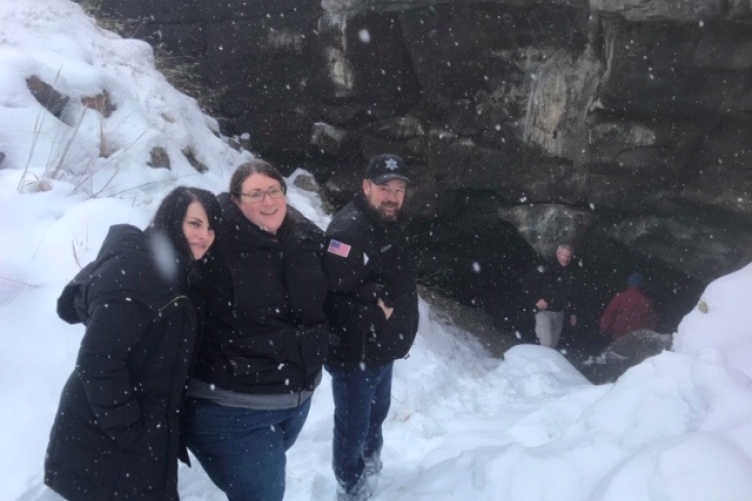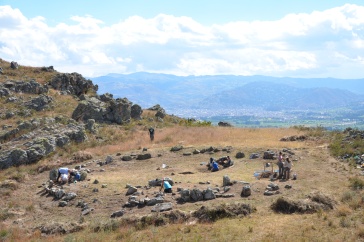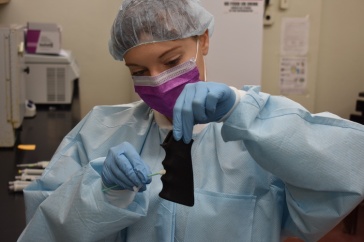
L-R: Amy Michael, Samantha Blatt of Idaho State University and Sheriff Bart May of Clark County, Idaho, at the entrance to the cave where the remains of Joseph Henry Loveless were found.

A UNH biological anthropologist has helped crack a case that turned out to be decades colder than anyone suspected.
UNH anthropology lecturer Amy Michael, working with colleagues at Idaho State University, the Clark County Sheriff’s Office and the DNA Doe Project, recently identified a man found in an Idaho cave in 1979 as Joseph Henry Loveless. An outlaw, Loveless was born in 1870 in Utah Territory and likely murdered more than a century ago. It’s the oldest identity ever recorded using genetic genealogy in a forensic case.
The torso of Loveless, a bootlegger and repeated jail-breaker suspected of murdering his wife with an ax in 1916, was discovered in 1979; in 1991, his limbs were found in the same eastern Idaho cave system. But without a head, obvious markings like tattoos or hint of sex or age of the person, investigators were at a loss. Further confounding the sleuths, Loveless was descended from polygamists and used more than 10 aliases.
“This is the strangest story I’ve come across in ten-plus years of forensic casework.”
“These bones had been studied by anthropologists at the Smithsonian and the FBI and still remained unidentified, so the idea was to let genealogists have a run at it,” Michael says.
Michael first brought her expertise in human tooth and bone microstructure to the case several years ago, while she was teaching at Idaho State. The team used the relatively new technique of genetic genealogy — which combines forensic science with the growing trove of genetic data generated by those tracing their family heritage via DNA tests — to identify Loveless. DNA Doe Project volunteers invested more than 2,000 hours to find a match with more than 31,000 possibilities, to help the team crack the case in about 15 weeks.
 |
| "Walt Cairns" was one of Lawless's many aliases. |
Not only were the remains exceptionally well preserved, possibly because of the conditions in the cave, the clothes found on the body were identical to those Loveless wore when he escaped, as described in a wanted poster.
“This is the strangest story I’ve come across in 10-plus years of forensic casework,” says Michael, who teaches popular courses on cold cases and forensic anthropology. “I was shocked that we were able to make the identification after so many years. This man’s identity and story would not have been recovered without genetic genealogy techniques.”
-
Written By:
Beth Potier | UNH Marketing | beth.potier@unh.edu | 2-1566

















































